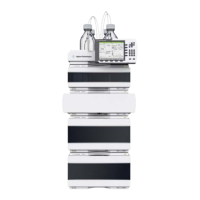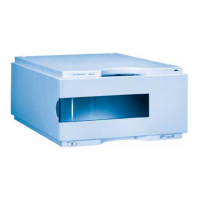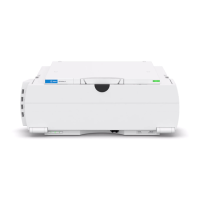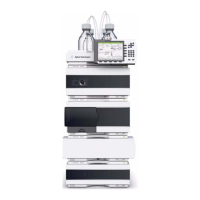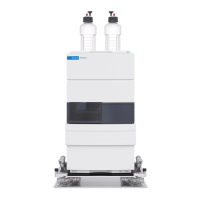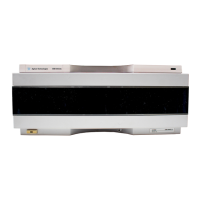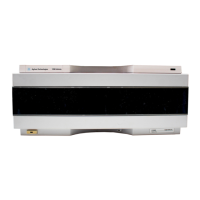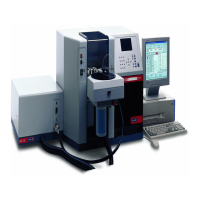96 1100 Series DAD and MWD User Manual
5 How to optimize the Detector
A wide bandwidth has the advantage of reducing noise by averaging over a
wavelength range — compared to a 4 nm bandwidth, the baseline noise is
reduced by a factor of approximately 2.5, whereas the signal is about 75 % of a
4-nm wide band. The signal-to-noise ratio for a 30 nm bandwidth is twice that
for a 4-nm bandwidth in our example.
Because the detector averages absorbance values that are calculated for each
wavelength, using a wide bandwidth does not negatively impact linearity.
The use of a reference wavelength is highly recommended to further reduce
baseline drift and wander induced by room temperature fluctuations or
refractive index changes during a gradient.
An example of the reduction of baseline drifts is shown in Figure 56 for
PTH-amino acids. Without a reference wavelength, the chromatogram drifts
downwards due to refractive index changes induced by the gradient. This is
almost completely eliminated by using a reference wavelength. With this
technique, PTH-amino acids can be quantified in the low picomole range even
in a gradient analysis.
Figure 55 Influence of Bandwidth on Signal and Noise
Bandwidth
30 nm
12 nm
4 nm
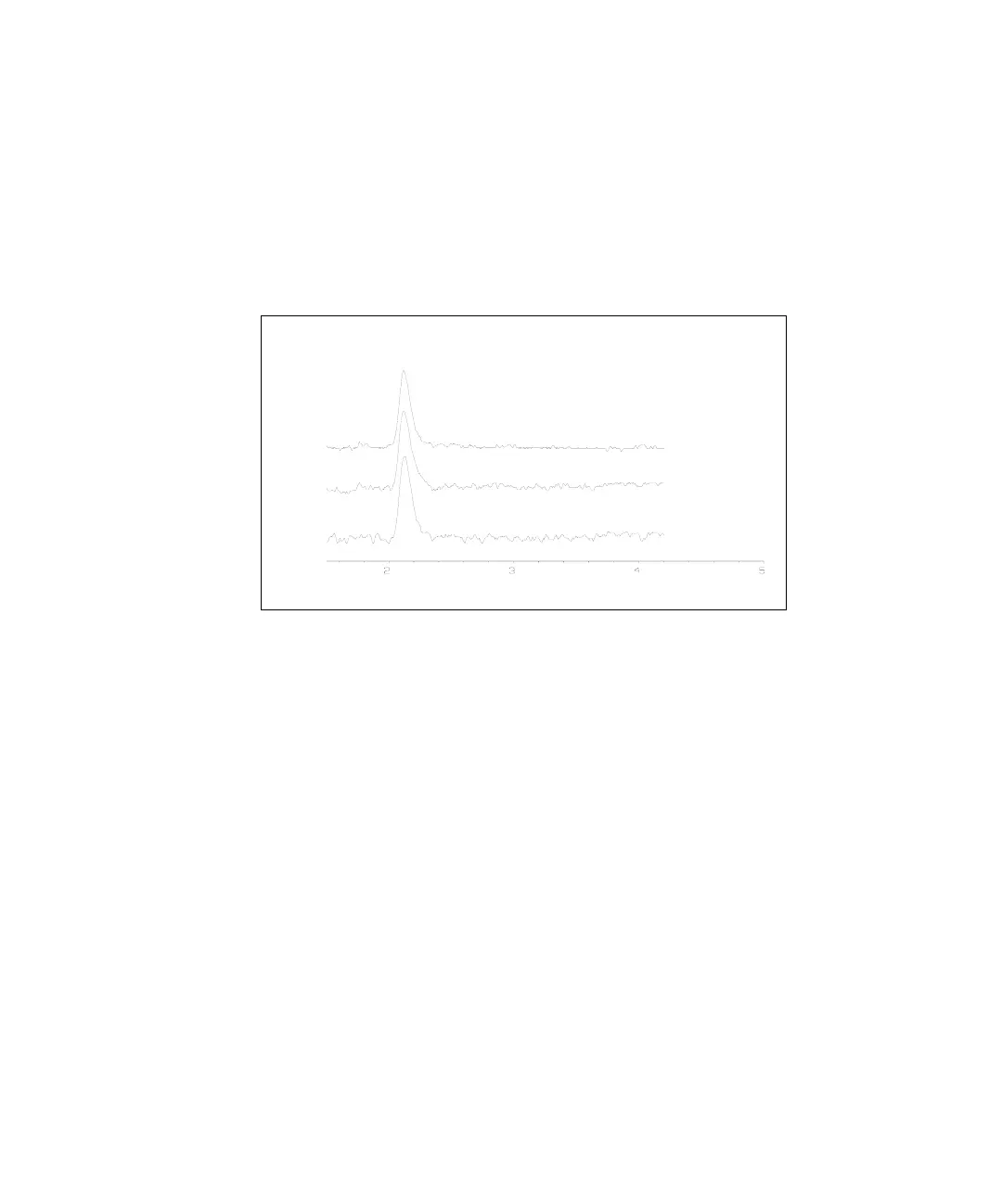